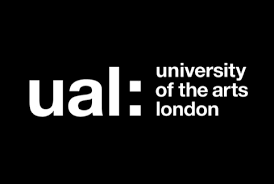THE WAY, WAY BACK
Hi There,
A few evenings ago I was slumped on the sofa without anything obvious to watch until I saw that TWWB was on again on Film 4. From the very first scene I was transfixed and reminded of what an outstanding film this is.
Another reason why I gravitated back to it is because it came up in conversation recently – when a producer I’m working with referenced it as the sort of story / tone / quality that they aspire to. Interestingly, they also referenced THE DESCENDENTS, another wonderful film written by TWWB writers Nat Faxon & Jim Rash, adapted from the novel by Kaui Hart Hemmings.
It got me thinking about WHY TWWB is such a good film and googling the writer / directors – Nat Faxon & Jim Rash (Faxon & Rash – memorable partnership name!).
One of the first things I came across was a press announcement about their next project THE HEART. Here’s the pitch / synopsis –
‘The Heart centers on Joe (Sam Rockwell) and Lucy (Octavia Spencer) who, while desperate for cash, take the job of delivering a human heart from New York to Florida in 24 hours. When they realize their delivery is destined for a black-market buyer who illegally skipped the donor list, they attempt to reroute it to its rightful recipient.’
As someone who hears and reads a LOT of pitches, that immediately struck me as an excellent one. Why is it so good? I recognise the idea as one that I’ve heard vaguely about in the past (I know someone who had a similar voluntary job couriering organs for transplants abroad). There is something fascinating about this – it’s essentially a simple (menial?) job but at the same time it’s incredibly important and the stakes couldn’t be higher.
Even in this two sentence pitch there are several highly dramatic and identifiable character dilemmas and issues – the lead characters are desperate for money and therefore open to temptation; there is a long journey involved – a staple of film narrative and immediately appealing; there is a ticking clock element – they need to get the heart from A to B in a set time before the heart is no longer usable; the stakes change for our protagonists when they discover the heart is destined for someone morally questionable; the ultimate dilemma seems to be their desire to make quick money against the need to do the right thing; and the inference that in doing the right thing they may be placing themselves in danger from the black-market buyer – there is no easy way out of this (That’s why it’s a ‘dilemma’!).
Yes – it’s a cracking pitch. It looks deceptively simple on the page but story ideas this good – and as clearly and economically expressed as this – are gold-dust.
Onto THE WAY, WAY BACK itself. (Incidentally one of the things I’m not sure about is the title! That comma is very deliberately placed and the title is, I suppose, interestingly open to many interpretations. But I don’t think it’s a memorable title – it’s not distinctive enough, and it’s not specific enough – there is also a film called THE WAY BACK.)
One of the great things about the film is that I’ve watched it enough times now to not only enjoy going along for the ride of the story but also to notice different brilliant things each time I watch it. Here are a few random observations –
Like so many of the best films, this film illustrates how character is everything. The characterisations in this film across the board are just wonderful – so many beautifully-observed human, flawed, highly believable, engaging characters. Quite a few of them are objectively unlikeable (in particular Steve Carrell’s character) but he’s still a wonderfully believable, relatable character.
POV –
The story is clearly told from 14 year old Duncan’s point of view. Even though there are so many characters who have their own unique stories in this film, you still are in no doubt whose story this is. All the other stories just add colour and texture to Duncan’s story (rather than clouding the focus of the story). Interestingly one of the few (only?) characters who has significant on-screen time who doesn’t have much of a story / agenda as a character is that played by writer / director Nat Faxon.
It also connects to the choices the writers make about what parts of the story we see and don’t see. Sharing Duncan’s POV we also share his prejudices about certain characters and try to read between the lines as he does, trying to work out what is going on in the unfathomable grown-up world and rushing to judgement.
There is such power in this particular POV. Who of us hasn’t spent time with a teenager who hates everyone and knows best about everything? In fact which of us hasn’t been a teenager who hates everyone and knows best about everything?
The Devil is in the detail –
Duncan’s trousers tucked into his socks when he’s riding his (pink, girl’s) bike; what he (and they all) wear – costume, make-up, hair, props, design feel so significant and well-judged. The moment Duncan pulls the pink tassles off his pink female bike. His taste in music.
Character arcs –
Character is story. (Script guru Kate Leys spoke at the C4 course the weekend before last – if you get a chance to listen to her speak, take it – she is a fount of story-telling wisdom and insights. And on this one ‘debate’ about whether the best stories are ‘plot-driven’ or ‘character-driven’ she comes down unequivocally on the side of character – all the best stories start from a place of character.
In this film there are so many excellent, conflicted three-dimensional characters – so many of whom have their own emotional arc and story – Jim Rash as Lewis, Toni Colette as Pam, Sam Rockwell as Owen, May Rudolph as Catlin, Steve Carrell as Trent, Alison Janney as Betty, Anna Sophia Robb as Susanna, Rob Corddry as Kip, River Alexander as Peter. ALL of these secondary characters have their own emotional arcs but this fact doesn’t take the focus away from Duncan as central character and story POV. This is a hugely impressive feat in a 1hr 43min film – and something that we should all aspire to – pretty much all your minor characters need to have their own agenda, their own personal story. These character sub-plots should not only NOT distract from the main character story – they should add to and inform the main character story.
Theme –
There are many different themes – including – divorce and the way the children of divorced parents cope with it emotionally; growing up (dramatized not just through the central character Duncan – but also through the Sam Rockwell and Toni Colette characters). Above all though the film’s main theme seems to me to be the focus on the teenage years, coping with adolescence. The film feels emotionally universal (or is it just me that identifies deeply with this painfully awkward 14 year old boy?).
The importance of place –
In fact a particular place at a particular time – it evokes that feeling of summer holidays. The specificity of the water park and of this East coast US town in the summer holidays. Again this feels utterly specific and distinctive but also somehow universal.
The same character operating in different worlds –
So allowing us to see different facets of the character. (Duncan moving between his house and his – secret – job at the water park).
Sub-text –
There is, for instance, one tremendous scene in which the family play an old board game. The dialogue is entirely about the rules and progress of the board game – but the scene is laden with tension and anger and is about something else altogether. DON’T write on the nose!
There are so many gaps in audience knowledge –
In what we know about the characters and their lives outside of this temporary holiday world. Duncan’s father for instance is hugely present as someone who is referred to and his importance to the story is clear – but we never meet him and we don’t need to. In many ways it’s more powerful being asked to imagine him and bring our own interpretation to fill in this on-screen absence in the story.
And connected to the above – Exposition –
Think very carefully about what back-story information is absolutely essential to the story – it is so often very much less than you think. As far as I can remember there is NO undramatised exposition in the dialogue in this film.
If you haven’t seen the film, I would highly recommend it (as you’ll have gathered).
The next newsletter will be on Friday 22nd.
All the best
Phil
PHILIP SHELLEY
@PhilipShelley1
February 8th 2019






















